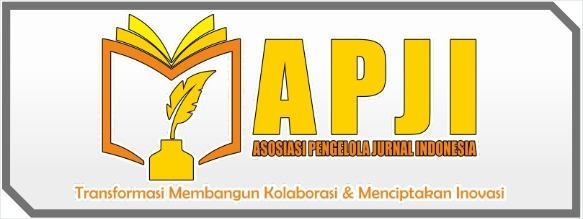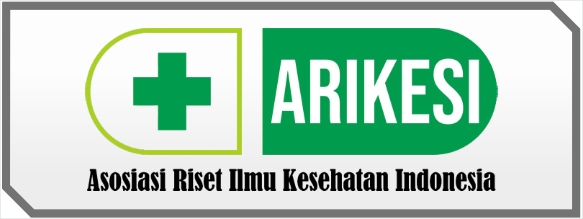Kajian Retrospektif Potensi Interaksi Obat Resep Polifarmasi pada Pasien Poli Jantung di Rumah Sakit X Di Karawang
DOI:
https://doi.org/10.57213/tjghpsr.v2i2.338Keywords:
Drug Interactions, Cardiac Polyclinic Patients, Polypharmacy, PrescriptionsAbstract
Drug interactions are part of drug-related problems that can affect patient therapy. These interactions can hinder the achievement of desired therapeutic outcomes. The incidence of drug interactions is increasing as the number of medications received by patients grows. This study aims to identify the presence of polypharmacy prescriptions and their potential drug interactions in cardiology clinic patients at Hospital X in Karawang. The research was observational with a retrospective design, utilizing data from outpatient cardiology clinic prescriptions from January to March 2023 through random sampling. The study results showed that out of 90 prescriptions, 87 (96.66%) had drug interactions, while 3 prescriptions (3.33%) did not. Drug interactions of moderate severity accounted for 239 cases (82.9%), with the most frequent interactions being Furosemide with Bisoprolol, totaling 45 cases (18.8%), and Spironolactone with Bisoprolol, totaling 44 cases (18.4%). Drug interactions of major severity were recorded in 53 cases (17%), with the most frequent being Spironolactone with Ramipril, totaling 20 cases (37.7%), and Spironolactone with Candesartan, totaling 12 cases (22.6%).
References
Agustin, O. A., & Fitrianingsih. (2020). Kajian interaksi obat berdasarkan kategori signifikansi klinis terhadap pola peresepan pasien rawat jalan di apotek X Jambi. Jurnal Farmasi Klinik Indonesia, 5(4), Desember 2016.
Baxter, K. (2010). Stockley’s drug interactions (9th ed.). Pharmaceutical Press.
Eliani Tirta, P. M. A., Empuadji, P. P., & Setiawan, P. Y. B. (2023). Kajian retrospektif potensi interaksi obat hipertensi pada peresepan pasien poli penyakit dalam di rumah sakit swasta X di Denpasar. Jurnal Riset Kesehatan Nasional, 7(2), 98–103. https://doi.org/10.37294/jrkn.v7i2.501
Handayani, K., & Saibi, Y. (2019). Potensi interaksi obat pada resep pasien diabetes melitus rawat jalan di RS X Jakarta Pusat. Pharmaceutical and Biomedical Sciences Journal, 1(1), 43-47.
Herdaningsih, S., Muhtadi, A., Lestari, K., & Annisa, N. (2016). Potensi interaksi obat-obat pada resep polifarmasi: Studi retrospektif pada salah satu apotek di Kota Bandung. e-SEHAD, 1(1), Desember 2020, 01-10.
Hidayati, N. R., Sulastri, L., Indriaty, S., Karlina, N., Zahra, N. B., Tinggi, S., & Muhammadiyah, F. (2024). Analisis potensi interaksi obat pada pasien hipertensi di instalasi rawat inap RSD Gunung Jati Cirebon. Journal of Pharmacopiolium, 7(1), 16–28.
Ramdani, R., Skarayadi, O., Indrawati, W., Hermanto, F., & Wahyuni, E. (2022). Potensi interaksi obat antihipertensi pada pasien geriatri rawat inap di salah satu rumah sakit Kota Bandung. Pharmacoscript, 5(1), 71–91.
Saputri, M., & Dewi, S. R. (2023). Potensi interaksi polifarmasi pasien jantung koroner (PJK) di Rumah Sakit I.A. Moeis Samarinda. Jurnal Sains dan Kesehatan (J.Sains Kes.), 5(2).
Supriyadi, Y., Susilo, R., & Milhah, M. Z. (2019). Gambaran interaksi obat potensial pada resep pasien poli jantung RSUD Gunung Jati Kota Cirebon. Medimuh, 1(2), 179-186.
Zulfa, I. M., Rahmawati, Y. A., & Anggraini, P. F. (2022). Potensi interaksi antar obat dalam peresepan rawat jalan pasien penyakit jantung akibat hipertensi. Jurnal Farmasi Indonesia, 19(1), 90–97. https://doi.org/10.31001/jfi.v19i1.1253
Zulkarnaini, A., & Martini, R. D. (2019). Gambaran polifarmasi pasien geriatri di beberapa poliklinik RSUP Dr. M. Djamil Padang. Jurnal Kesehatan Andalas, 8(1s). http://dx.doi.org/10.25077/jka.v8i1S.916
Downloads
Published
Issue
Section
License
Copyright (c) 2024 The Journal General Health and Pharmaceutical Sciences Research

This work is licensed under a Creative Commons Attribution-ShareAlike 4.0 International License.













